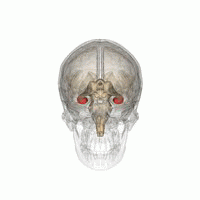Neuronal Basis of Neuropathic Pain and Neuroprotective Mechanisms of Antiepileptic Drugs
Neuronal Basis of Neuropathic Pain and Neuroprotective Mechanisms of Antiepileptic Drugs
This article explores the use of antiepileptic drugs (AEDs) beyond their traditional role in treating epilepsy, particularly in managing neuropathic pain, trigeminal neuralgia, and as neuroprotective agents in conditions such as stroke and neurodegenerative diseases. These conditions often share pathophysiological mechanisms, including neuronal hyperexcitability, increased glutamatergic activity, and long-term synaptic changes, similar to epilepsy.
Trigeminal neuralgia, a severe form of neuropathic pain, is linked to vascular compression and demyelination of the trigeminal nerve. AEDs are effective in managing neuropathic pain by modulating sodium and calcium channels, reducing glutamate release, and enhancing inhibitory GABAergic transmission. These mechanisms help reduce pain persistence and hyperalgesia.
AEDs also show neuroprotective potential in experimental models of ischemia. Drugs like lamotrigine and remacemide have been found to reduce excitotoxicity—a major contributor to neuronal death in stroke and neurodegenerative diseases—by acting on NMDA receptors. Furthermore, AEDs may modulate pathological synaptic plasticity, offering therapeutic benefits for conditions such as Parkinson's, Huntington's, and Alzheimer's diseases.
While the efficacy of AEDs in short-term ischemic events remains limited, they show promise in prolonged ischemia, suggesting broader applications in neuroprotection. Ongoing research continues to explore the role of AEDs in addressing energy stress, synaptic plasticity, and neurotransmission across various neurological disorders.
Antiepileptic drugs (AEDs) have long been explored for uses beyond epilepsy, particularly in treating neuropathic pain, trigeminal neuralgia, and as neuroprotective agents in stroke and neurodegenerative diseases. The pathophysiology of these conditions often involves neuronal hyperexcitability, increased glutamatergic activity, and long-term synaptic changes, similar to epilepsy. Trigeminal neuralgia, a form of neuropathic pain, is linked to vascular compression and demyelination of the trigeminal nerve, leading to recurrent episodes of intense facial pain.
Experimental models, particularly in animals, have helped elucidate the mechanisms of neuropathic pain, revealing the role of sodium and calcium channels in generating ectopic discharges and hyperalgesia. Central sensitization, characterized by increased excitability of spinal neurons and glutamate release, also contributes to pain persistence. AEDs modulate these processes by inhibiting sodium and calcium channels, reducing glutamate release, and enhancing inhibitory GABAergic transmission, making them effective in managing neuropathic pain.
Moreover, AEDs have shown neuroprotective potential, particularly in ischemia models. Drugs like lamotrigine and remacemide, acting on NMDA receptors, exhibit complementary neuroprotective effects by reducing excitotoxicity— a key factor in neuronal death during ischemia and neurodegenerative diseases. AEDs also modulate pathological synaptic plasticity, offering potential therapeutic benefits in diseases like Parkinson’s, Huntington’s, and Alzheimer’s.
While their efficacy in short-term ischemic events is limited, AEDs have shown promise in prolonged ischemia, suggesting their broader utility in neuroprotection. Further research continues to explore the role of AEDs in modulating energy stress, synaptic plasticity, and neurotransmission across various neurological conditions.
Conclusion: The use of antiepileptic drugs in conditions other than epilepsy has a relatively long history. As early as the mid-1960s, researchers like Campbell conducted the first clinical trials on the use of carbamazepine in the treatment of trigeminal neuralgia. The undesirable effects of first-generation antiepileptic drugs often limited their use. Today, efforts are being made to develop drugs (second-generation antiepileptic drugs) with fewer side effects that can be applied not only to epilepsy but also to conditions such as neuropathic pain and even as neuroprotective agents in stroke and neurodegenerative diseases. It is likely that the aforementioned conditions share common pathogenic mechanisms: numerous studies have hypothesized that neuronal hyperexcitability, increased excitatory glutamatergic tone (and a reduction of inhibitory tone), and long-term modification of synaptic transmission play a critical role in the pathogenesis of neuropathic pain, epilepsy, and cerebral ischemia.
To read the full text of this chapter, log in or request an account
A Google Account is needeed to request a Member Account
